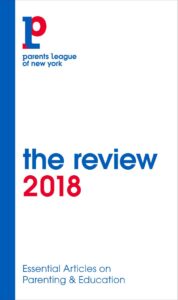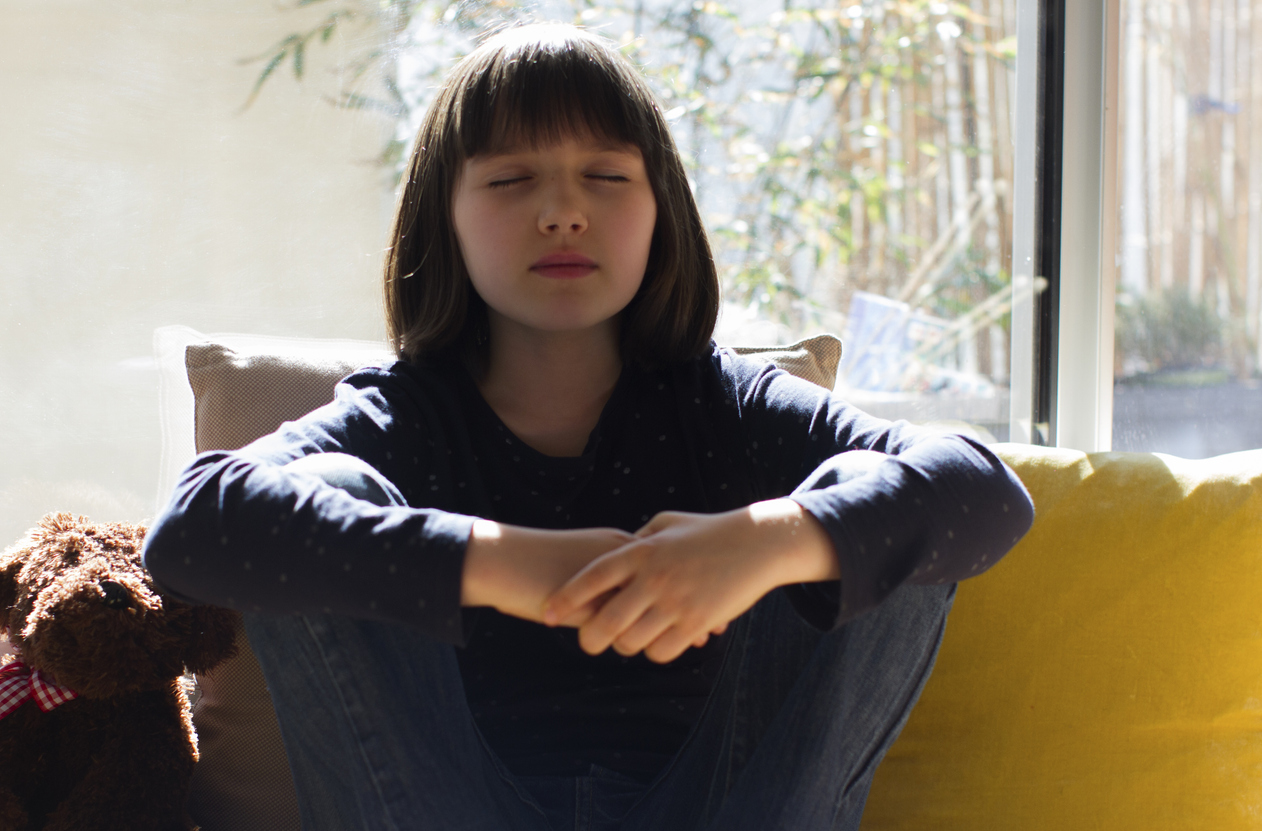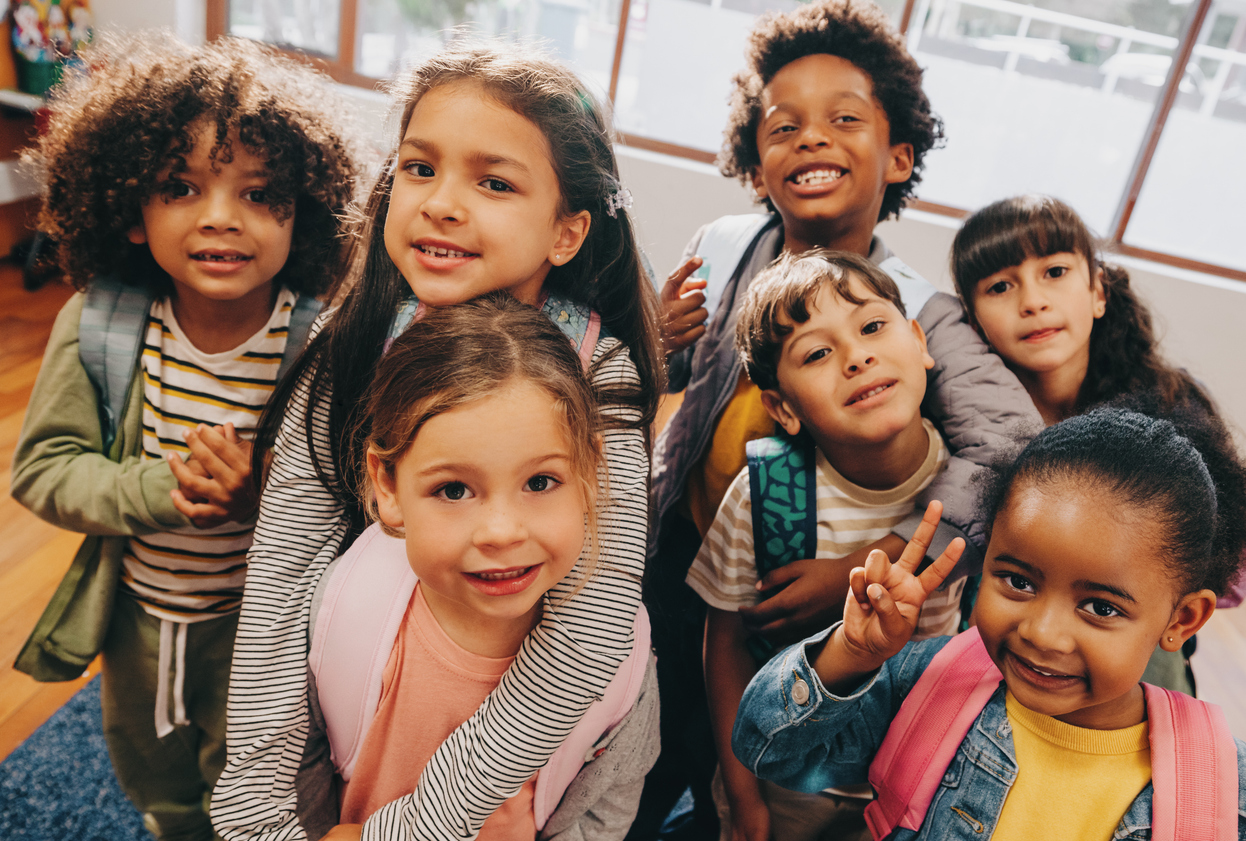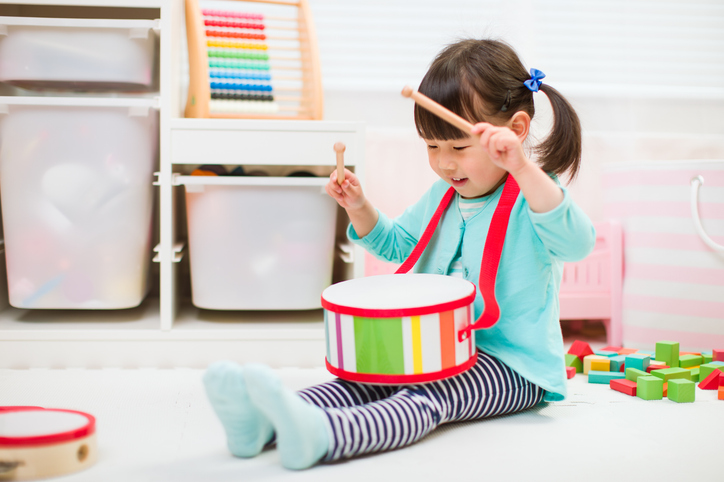Rigor and the Pursuit of Happiness
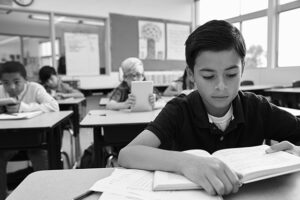
Each year thousands of parents make one of the most important decisions of their lives: To which school shall I send my child? This question reflects our concerns, worries and anxieties about competition and what we hold dear, speaking to our very core values. Where can my child find both academic success, and the pursuit of happiness? This individual decision making reflects one of the essential debates going on in a larger scale in American schooling: Can a school be a place of both academic rigor and happiness? Does the one, surely a most important concept, militate against the other—a goal that we as parents seemingly share for all our children? Who in fact does not want her child to be happy? But who wants a school that lacks rigor, or one that fails in its obligation to promote academic excellence?
The Essential Debate
In the late 19th century, John Dewey and other proponents of the progressive movement saw the major goal of education as an engagement in a process of making hopeful and democratic citizens. While not fully abandoning that focus, educators in the 1980s declared character education to be the most desirable outcome. Now we are in an age of high stakes testing, assessment and school rankings. Today’s battles over No Child Left Behind and the Common Core, and the role of the SATs and Advanced Placement courses evince a great concern over academic challenge, with standardized testing privileging the acquisition of knowledge and skills over more subjective aspects of learning. Educators also feel compelled to ensure a rigorous academic environment in which children become resilient, learn from failure, and acquire the grit needed in our increasingly competitive world.
In an educational terrain that often resembles an intellectual battlefield, there appears little consensus on the question of what students should know, when they should know it, and how curriculum should be delivered. Nor have we arrived at a definition of what “rigor” really means. Supporters of a more rigorous curriculum, with its attendant increase in homework and classroom time, have recently found their own nemesis in examining the results of education in Finland, where fewer hours spent on homework and in the classroom have led to greater academic achievement and, arguably, happiness for students. These findings suggest that a major goal of education should be to ensure happiness and create students filled with empathy and altruism.
Clearly there is a tension inherent in these concepts of rigor and happiness. And the debate informs the mission of independent schools around the country. Even a cursory examination of school mission statements reveals the challenge of reconciling these ideal types. Independent schools throughout the country speak of “academic rigor,” challenging academics and extracurricular programs, responsibility, compassion, diversity, global awareness (even citizenship), lifelong learning. The more cynical among us who teach in independent schools might argue there is such a similarity in school missions that it is often difficult to discern what a school really stands for. Some boast being environments that emphasize traditional education, others progressive. But what is meant by traditional education, after all? How does one define a progressive school? How do their goals differ in terms of student outcome, achievement and habits of heart, mind and body?
What Defines American Education?
On a number of occasions during the last 10 years I have been invited to speak to principals, teachers and students in Shanghai about the most promising aspects of American education. These invitations came as a result of the Chinese government’s efforts to improve education in Shanghai, to make it more effective and rigorous, while at the same time promoting greater happiness and creativity among students and teachers.
In grappling with the differences between the examination-driven focus of Chinese education, often with classroom settings of upwards of 40 to 50 students, and our own, I found myself time and again returning to the question of how rigor and happiness are balanced in the American independent classroom setting. These opportunities afforded me the chance to get beyond the day-to-day experience of a school leader, and to think about what practices in American education define us at our best. And how interesting, I observed, that as the Chinese government was moving educators in the direction of creating environments dedicated to greater creativity and happiness, here in the United States our impetus seemed to be more in the direction of testing and concrete measurement of achievement and outcomes.
If the rigorous school finds its expression in contemporary education’s effort to measure achievement and effectiveness of pedagogy, what would, or should, schools dedicated to happiness provide? What, in short, would constitute a happiness agenda for American education?
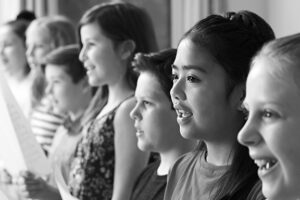
The Happiness Agenda
Let me suggest that in thinking about the role of happiness in schools, and its relationship to rigor, we must consider several major issues: the giftedness of each child; intelligence and assessment; the quality and attributes of those who work in our schools; purposeful use of time; and encouraging goodness and community.
We must start with an essential, but often controversial, premise: Each child is gifted. No, not in the way that gifted education programs define gifted, complete with IQ scores, academic achievement and testing scores, and the like. Independent school teachers should accept as an article of faith that each child possesses unique gifts that it is the responsibility of teachers and parents to cultivate, nurture and promote. The accepted academic definition of “rigor” fails to take into account the plethora of gifts, talents and abilities that each child possesses.
The model of this giftedness is akin to what psychologist Howard Gardner has called multiple intelligence. In his pathbreaking work, Gardner posits the existence of eight different types of intelligence: Spatial; Bodily-Kinesthetic; Musical; Linguistic; Logical-mathematical; Interpersonal; Intrapersonal; and Naturalistic. (He has also proposed that there is evidence of a ninth intelligence: Existential.) These intelligences cross cultural and national boundaries and challenge us to build schools that recognize each child’s strengths.
A school devoted to happiness finds its grounding in what good teachers have known for eons: The human mind is so supple and varied that what constitutes rigor for one child may indeed be an irrelevant or unfair test for another. The happy school boasts opportunities and programs that meet the needs of all children’s intelligences. No school can be complete without offering a range of programs, including the arts, music, physical education, language, science and mathematics, history, and curriculum that encourages psychological wellness through leadership and community building.
Nowhere do these insights challenge us more than in the area of assessment. For the last two generations, authentic assessment (focused on contextualized tasks, rather than standardized tests), seen best in the work of Jay McTighe and the late Grant Wiggins, has taken its place as a movement for educational reform. And here is where we as educators are challenged to recognize in our assessment of performance the multiple intelligences, perspectives and abilities before us. The extent to which a school depends upon only traditional forms of assessment tells us the extent to which it honors the intelligences and learning styles of its students. Happy schools honor the dignity of children, at root, by recognizing who they are, their strengths, their talents. And they design curriculum that engages children in understanding their universes in age and developmentally appropriate ways. They also provide opportunities for students, and parents, to offer feedback, thereby assessing performance in multiple ways and manners, consistent with the intelligences and learning styles found in every classroom. Indeed, one test or measure does not fit all, and success and achievement can and should be measured in various ways.
This is an enormous challenge, to be sure, and one that falls squarely on the shoulders of our school leaders and teachers. A school that pursues happiness will most assuredly be a place where school leaders and teachers share a sense of hope in the redemptive power of education to change the lives of the students in their charge. I learned many years ago that to encourage a happy school, one must hire mission-driven and happy people. In his monograph Good to Great and the Social Sectors, Jim Collins urges that “getting the right people on the bus” is as important in schools as it is in corporations. Hiring teachers who see the potential in each child, and then committing the school to a coherent program of professional development for teachers is a must.
And the school must allow for time to play, to learn, to express the personhood of each child. Recess and unstructured play for younger children, and schedules that allow for exploration, understanding and mastery as well as the development of friendships and social life for children of all ages are vital to the healthy and happy school. Such time commitments also speak to the need for the development of a parent partnership with the school. While not encouraging helicopter attitudes, parents and school must share responsibility for educating children to be the people nature intends.
Many years ago the psychologist David Elkind warned about the creation of the “hurried child,” one whose life is so structured that little free time exists for healthy development. We have good reason to fear that matters have become even worse, with economic changes, parental work schedules, and our growing fears about competition. The happy school allows parents time to step back, to consider the psychological well-being of their children, and brings them face-to-face with the realities of parenting in the 21st century. Perfection is not always achievable, and failure can be healthy, as long as challenges are reasonable and developmentally appropriate. As Wendy Mogel has written, there are true blessings that come from a skinned knee.
None of this is to argue that our children should not be challenged. In fact, all learning comes from overcoming challenges and dealing with change and the unfairness of life. Standards must be high, expectations clear. And children must be encouraged on a path of goodness, not merely self-referential achievement. For if we hold our moral and ethical standards high, and we offer children opportunities to connect responsibly to their world in meaningful ways, the path to happiness is smoothed. In fact, required community service is one of the great revolutions in independent schools over the last two generations. The new status quo recognizes that the way to a happy school demands that our children eschew narcissistic temptation and engage in good work toward others. Those of us in education for the last 30 years hold that this generation of students is more socially committed than ever before.
A New Type of Rigor
One might be tempted to argue that the happy school might not offer what is considered the traditional rigorous school experience, and that it does not value what is generally measured when discussing school achievement and success. But to believe that is to define rigor too narrowly. For schools to be happy, they must also be places of genuine rigor, places that dedicate themselves to what we have discovered truly works in education. We must be rigorous in the ways we offer students opportunities to draw upon their multiple intelligences and strengths. Schools need to offer a rigorous range of assessments across ability and talent levels and learning styles. We must hire school leaders and teachers who demonstrate their talents in reaching the children in their charge. We need to reassess the ways in which we employ schedules and give children greater freedom for play, reflection and socialization. And we must work diligently to create opportunities for all children to rise to the better angels of their natures in service to one another and to their world at large.
Ours is an exciting time in education. Ultimately attending to what one may call the “happiness agenda” in our schools can lead to greater hope for the future in this our most vital task, preparing our children for the challenges of a future world that can only be approximated.
References
Collins, James C, and James C. Collins. Good to Great and the Social Sectors: Why Business Thinking Is Not the Answer : a Monograph to Accompany Good to Great : Why Some Companies Make the Leap-and Others Don’t. Boulder, Colo.?: J. Collins, 2005. Print.
Elkind, David. The Hurried Child: Growing Up Too Fast Too Soon. 3rd ed., Perseus, 1981.
Gardner, Howard, Frames of Mind: The Theory of Multiple Intelligences. Basic Books, 2011.
Mogel, Wendy. The Blessings of a Skinned Knee: Using Jewish Teaching to Raise Self-Reliant Children. Penguin, 2011.
Multiple Intelligences Oasis – Howard Gardner’s Official MI Site, www.multipleintelligencesoasis.org.
Wiggins, Grant P, Jay McTighe, Leslie J. Kiernan, and Frank Frost. Understanding by Design. Alexandria, Va: Association for Supervision and Curriculum Development, 1998.
About the Author
Scott R. Reisinger is Head of Trevor Day School, a pre-K through 12th grade school in Manhattan
This article first appeared in the 2016 issue of the Parents League Review. Get the current issue of the Review free with a family membership. Or purchase it separately.
